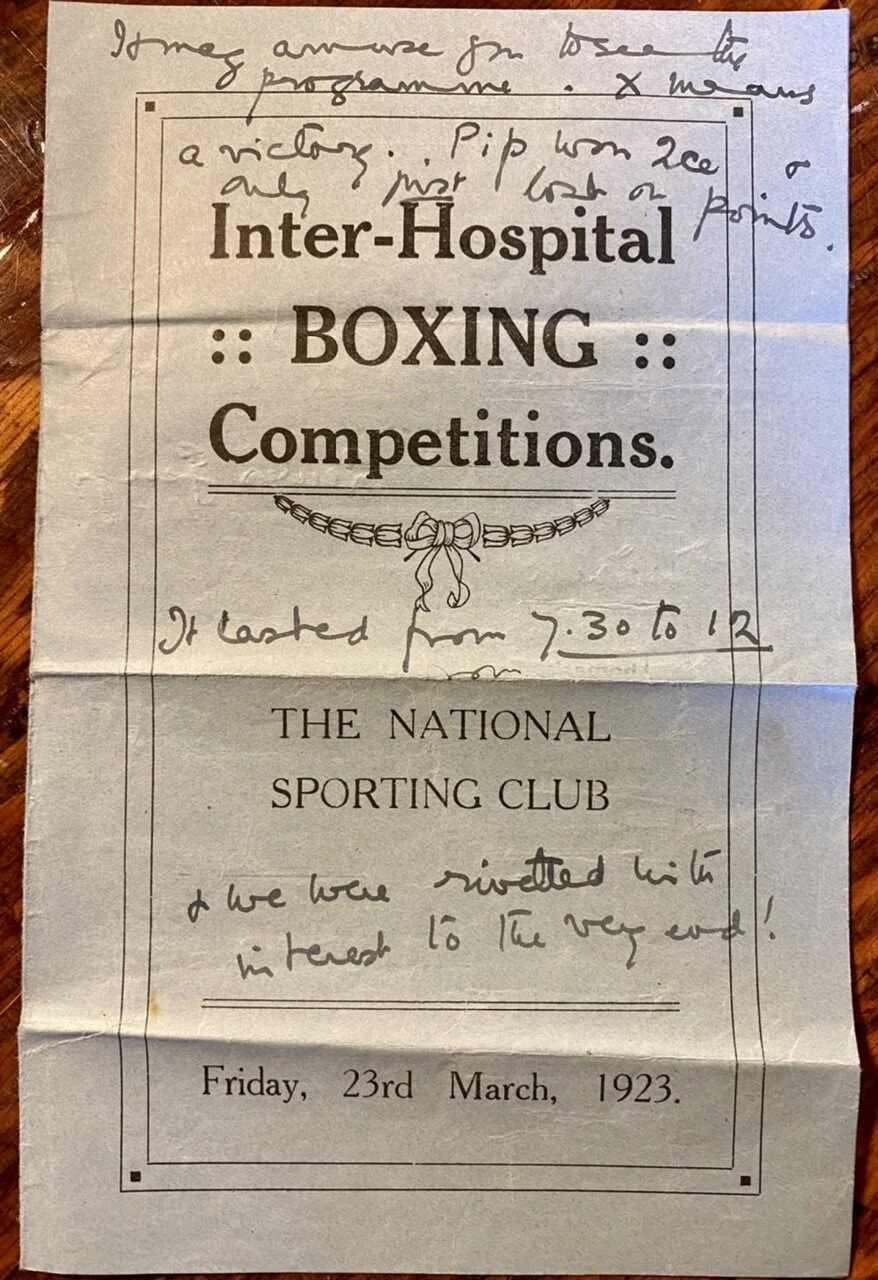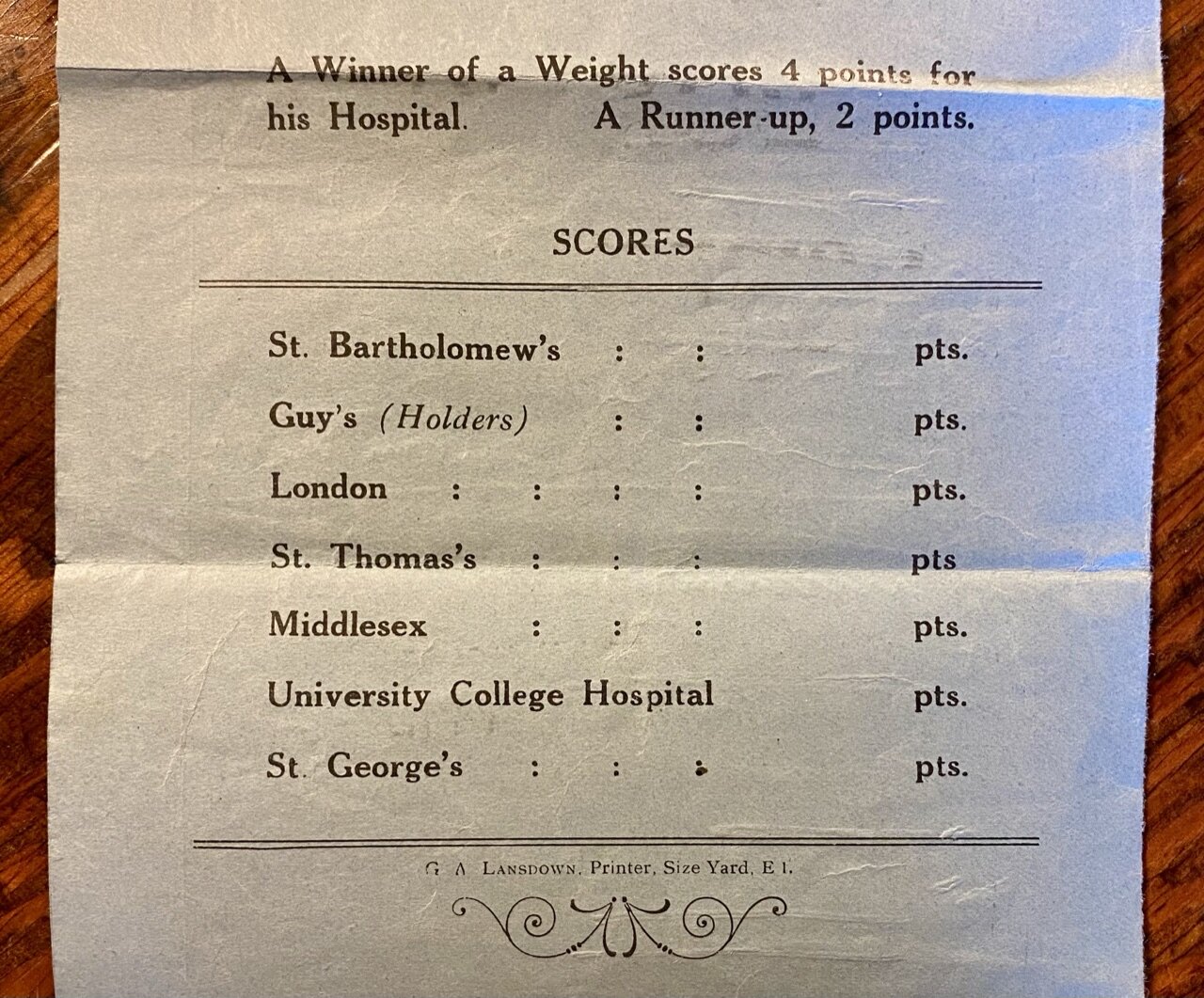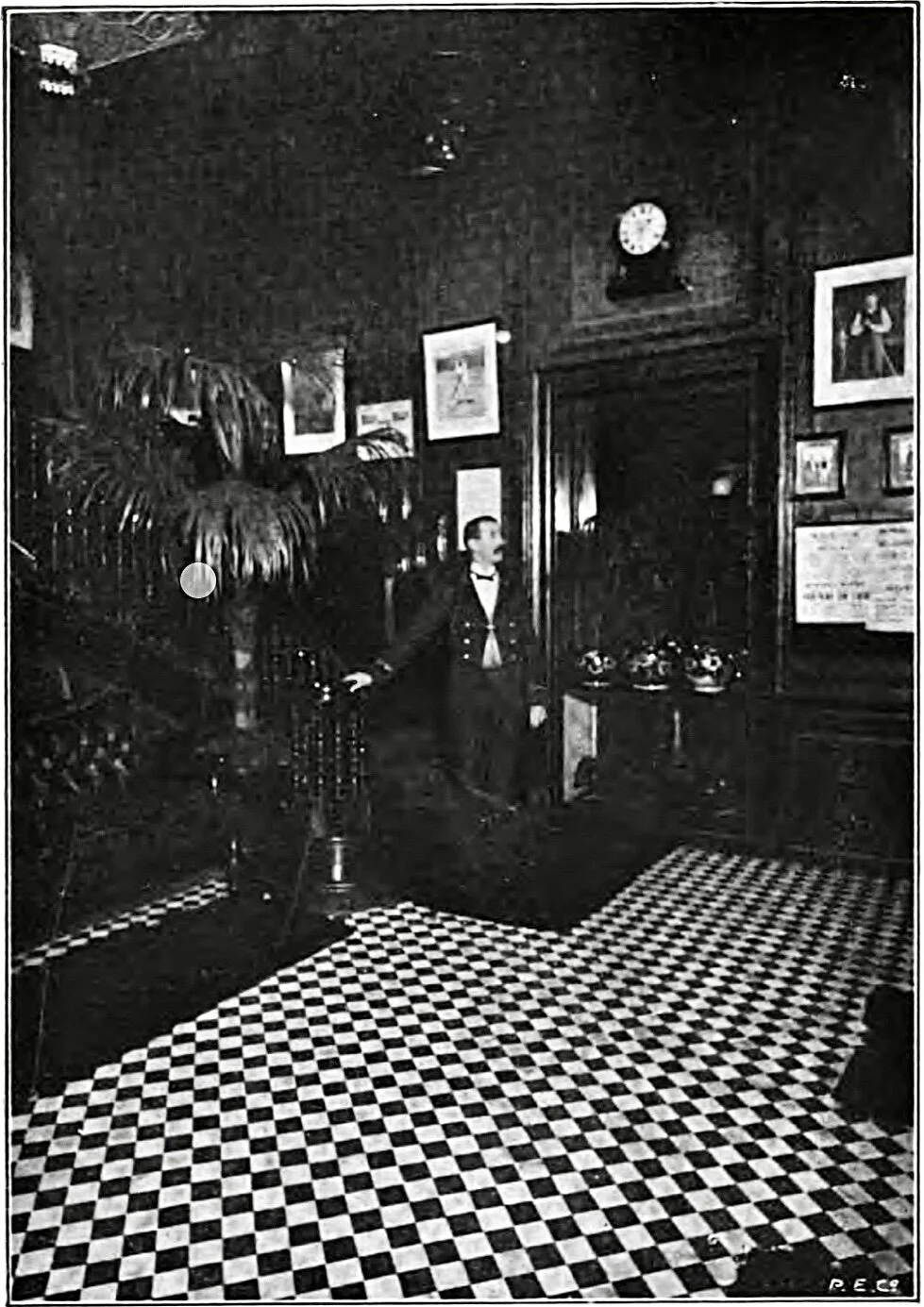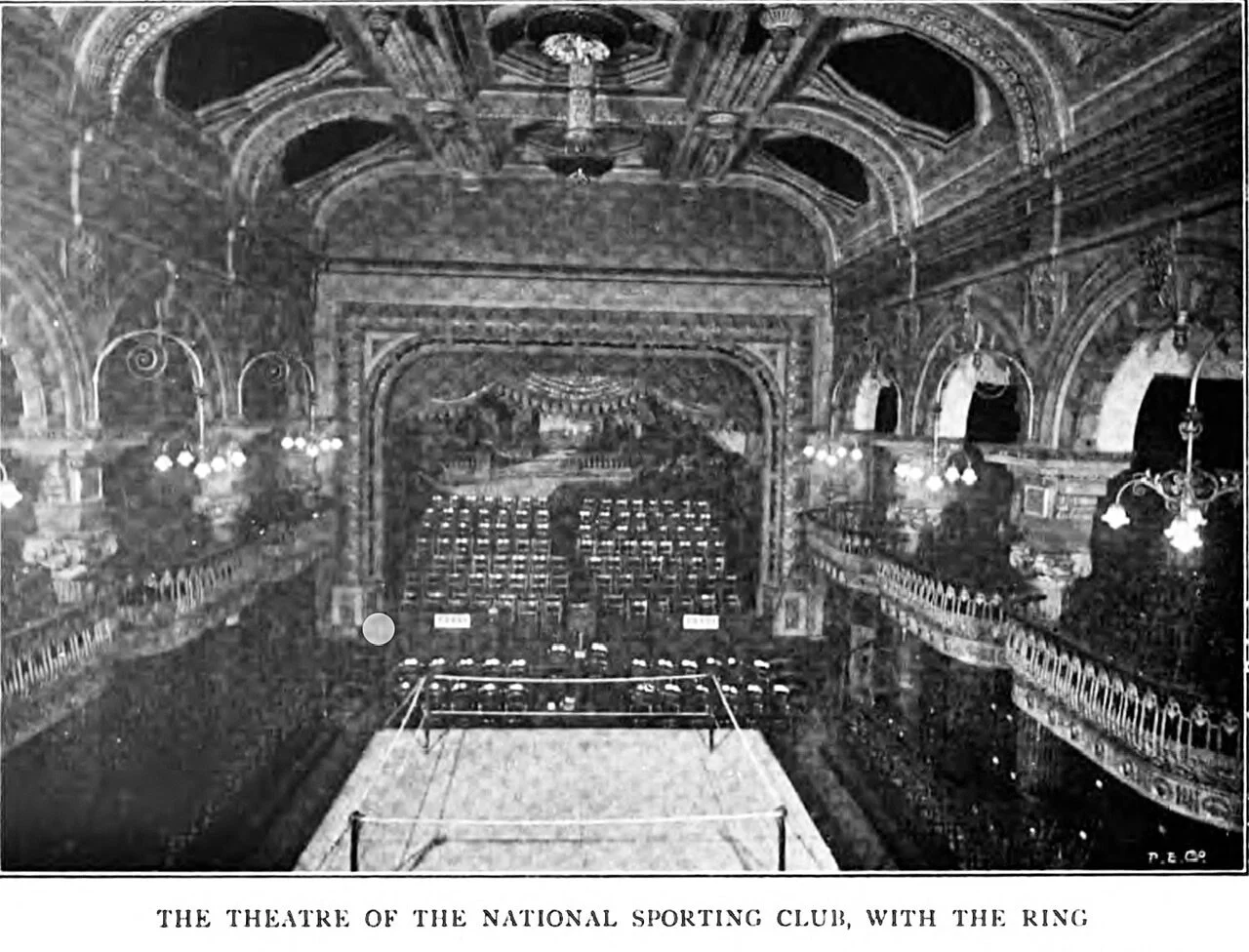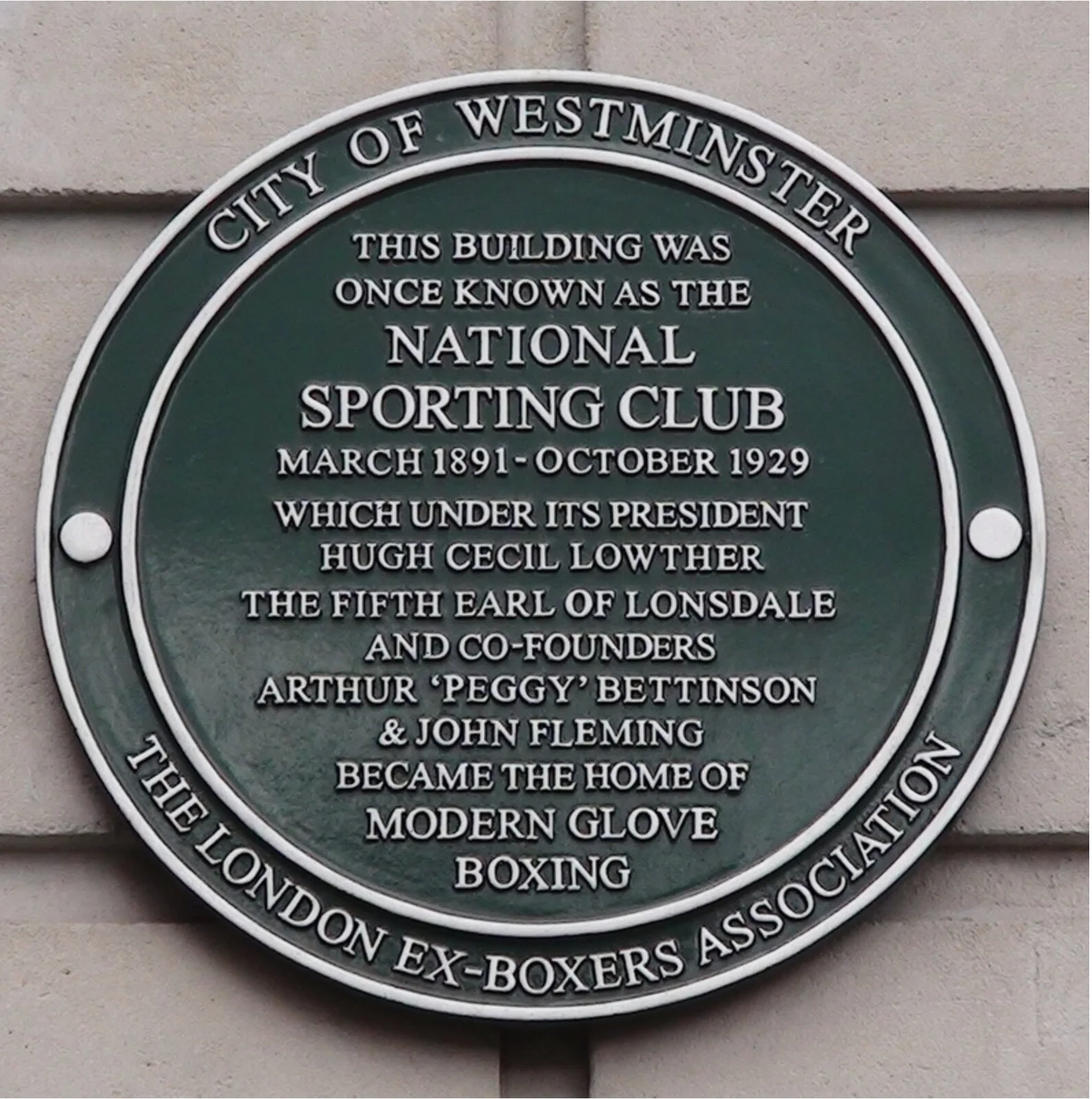Fisticuffs for a Good Cause
Found among the correspondence of Gladys Huntington was a brochure from the “Inter-Hospital Boxing Competitions” at The National Sporting Club on the 23rd of March, 1923. The National Sporting Club was the United Kingdom’s oldest boxing club and is credited with the creation of the original eight weight classes: Fly, Bantam, Feather, Light, Welter, Middle, Light Heavy, and Heavy.
After Gladys attended the Inter-Hospital Boxing Competitions, she likely sent the brochure to her mother, Kate Parrish.
Front of the brochure:
“It may amuse you to see the programme. X means a victory.. Pip won [twice] & only just lost on points. It lasted from 7:30 to 12 & we were riveted with interest to the very end!”
The brochure handed out to spectators listed the competitors for the evening by weight class. Gladys, and undoubtedly other spectators, kept their own tabulations on the winners of each bout: annotated by an “X” next to their name, along with crossing out the names of those who lost.
Content Warning: A quotation below from Gladys’ annotation on the boxers is racially insensitive and considered offensive.
Gladys was moved to remark on the race and ethnicity of two boxers in the Fly class: “Siamese! Negro!!”
The competition seems to have been a fundraiser for seven local London hospitals listed on the back of the brochure with spaces for spectators to tabulate scores.
According to Arthur Frederick Bettinson, former boxer and founder of the NSC, and author W. Outram Tristram, the sport of boxing in England has a long history. Starting in the seventeenth century, “the Piazza in Covent Garden… was a common meeting-ground for Sportsmen, prize-fighters, gamblers, and that ever-flourishing fraternity who find the delights of gaming fiercely beautiful.” Historically a favorite pastime of English noblemen, famous writers such as Charles Dickens and Arthur Conan Doyle also professed their love of the sport. The National Sporting Club opened on March 5, 1891 in Covent Garden, and included refined spaces such as a Coffee Room, a “fine Billiard Room,” and a grand staircase - all signifiers of the clientele’s socioeconomic status. The boxing ring was referred to as the “theatre,” an appropriate term for the spectacle of boxing.
The grand staircase
The boxing theatre
The National Sporting Club remained open in Covent Garden until 1929, so this seemingly small piece of ephemera offers a fascinating and tangible insight of early twentieth century sporting events in London - seen through the eyes of a wealthy American woman.
Resources
Thumbnail: https://www.sportspages.com/product/national-sporting-club-boxing-tournament-1961-programme
A.F. Bettinson & W. Outram Tristram, The National Sporting Club: Past and Present. Sands & Co., London, 1902.(7, 20) https://babel.hathitrust.org/cgi/pt?id=nyp.33433082402078&view=1up&seq=11
Wallenfeldt, E.C. , Poliakoff, Michael , Hauser, Thomas , Olver, Ron , Sammons, Jeffrey Thomas , Collins, Nigel and Krystal, Arthur. "boxing". Encyclopedia Britannica, 17 Jun. 2021, https://www.britannica.com/sports/boxing
